Tottenham Hotspur F.C., or Spurs, is a professional football club located in Tottenham, North London, competing in the Premier League. The club emphasizes that their full name, 'Tottenham Hotspur,' should always be used. Since 2019, their home games have been played at the Tottenham Hotspur Stadium, built on the site of their former ground, White Hart Lane. The club is a major force in English football.
1900: Spurs Adopted Spurs as a Symbol
In 1900, the club used spurs as a symbol, which then evolved into a fighting cock.
1900: Southern League Title
In the 1899–1900 season, Tottenham won its first trophy, the Southern League title.
1905: Total Shares Sold By 1905
4,892 shares were sold in total by 1905.
1905: Purchase of Freehold
In 1905, Tottenham raised enough money to buy the freehold to the land for White Hart Lane, as well as land at the northern end.
1909: Cockerel Statue Placed on West Stand
At the end of the 1909–10 season, a bronze cast of a cockerel standing on a football was placed on top of the West Stand.
1909: West Stand Added
In 1909, the West Stand at White Hart Lane was added and the East Stand was also covered.
1913: Rivalry with Arsenal Begins
The rivalry between Tottenham and Arsenal began in 1913 when Arsenal moved from Plumstead to Highbury.
1919: Rivalry Intensifies with Arsenal's Promotion
In 1919, the rivalry between Tottenham and Arsenal intensified when Arsenal were unexpectedly promoted to the First Division, taking a place that Tottenham believed should have been theirs.
1919: Return to the First Division
In 1919–20 season, Spurs returned to the First Division as Second Division champions after the resumption of league football after World War I.
April 1921: FA Cup Win
On 23 April 1921, McWilliam guided Spurs to their second FA Cup win, beating Wolverhampton Wanderers 1–0 in the final.
1921: Covered Terrace Built
In 1921, the profits from the FA Cup win were used to build a covered terrace at the Paxton Road end of White Hart Lane.
1921: Cockerel Badge Added to Shirt
In 1921, the year they won the FA Cup, the cockerel badge was added to the shirt for the final.
1933: Brief Return to Top Flight
Tottenham had a brief return to the top flight in the 1933–34 season.
1934: East Stand Finished
In 1934, the East Stand at White Hart Lane was finished, increasing capacity to around 80,000 spectators.
1934: Brief Return to Top Flight
Tottenham had a brief return to the top flight in the 1934–35 season.
1935: Court Ruling Establishes Share Transfer Precedent
In 1935, a court ruling (Berry and Stewart v Tottenham Hotspur FC Ltd) established a precedent in company law that the directors of a company can refuse the transfer of shares from a shareholder to another person.
March 1938: Record Home Attendance at White Hart Lane
On March 5, 1938, White Hart Lane recorded its record home attendance of 75,038 for a cup tie against Sunderland.
1939: Numbers First Appeared on Shirt Backs
In 1939 numbers first appeared on shirt backs.
1943: Families Became Chairmen of Tottenham Hotspur F.C.
From 1943 to 1984, members of the Wale, Richardson, and Bearman families were chairmen of Tottenham Hotspur F.C. after Charles Robert who had been chairman since 1898 died.
1950: Return to the First Division
In the 1949–50 season, Tottenham returned to the First Division after finishing top of the Second Division under Arthur Rowe.
1952: Club Bought Brookfield Lane Training Ground
In 1952, Tottenham bought the 11-acre ground used by Cheshunt F.C. in Brookfield Lane for £35,000.
April 1955: Arthur Rowe Resigns
In April 1955, Arthur Rowe resigned as manager of Tottenham due to a stress-induced illness. Before leaving, he signed Danny Blanchflower.
1956: Spurs used a faux heraldic shield
Between 1956 and 2006 Spurs used a faux heraldic shield featuring a number of local landmarks and associations. The castle is Bruce Castle, 400 yards from the ground and the trees are the Seven Sisters. The arms featured the Latin motto Audere Est Facere (to dare is to do).
October 1958: Bill Nicholson Takes Over
In October 1958, Bill Nicholson became the manager of Tottenham Hotspur.
1959: Umbro kits in generic colours sold to football fans
Although Umbro kits in generic colours had been sold to football fans since 1959, it was with the Admiral deal that the market for replica shirts started to take off.
1959: Nicholson Signs Dave Mackay and John White
In 1959 Bill Nicholson signed Dave Mackay and John White.
1959: V-neck Shirt Replaced Collared Shirts
In 1959, the V-neck shirt replaced the collared shirts of the past.
1960: Spurs' 1960-61 season, where they became the first post-war-club to win both the Football League First Division and the FA Cup
Nike released the 2017-18 kit on 30 June, featuring the Spurs' crest encased in a shield, paying homage to Spurs' 1960–61 season, where they became the first post-war-club to win both the Football League First Division and the FA Cup.
1960: Start to the 1960-61 season
The 1960–61 season started with a run of 11 wins, followed by a draw and another four wins.
April 1961: League Title Win
On 17 April 1961, Tottenham won the league title after beating Sheffield Wednesday 2–1.
1961: Spurs Players Play in White Shorts for European Campaign
In 1961, Bill Nicholson sent Spurs players out to play in white instead of navy shorts for their European campaign, starting a tradition which continues to this day in European competitions.
1961: "Glory Glory Tottenham Hotspur" Originates
In 1961, the song "Glory Glory Tottenham Hotspur" originated after Spurs completed the Double in 1960–61 and entered the European Cup for the first time.
1961: "Glory, Glory Hallelujah" sung at White Hart Lane
In the 1961-62 season, the hymn Glory, Glory Hallelujah was sung by 60,000 fans at White Hart Lane in Tottenham's European Cup matches.
1962: Consecutive FA Cup win
In 1962 Spurs won their consecutive FA Cup after beating Burnley in the 1962 FA Cup final.
1962: Highest League Finish Since 1963
The 2016-17 season was their highest league finish since the 1962-63 season.
May 1963: European Cup Winners' Cup Victory
On 15 May 1963, Tottenham became the first British team to win a European trophy by winning the 1962–63 European Cup Winners' Cup, beating Atlético Madrid 5–1 in the final.
1963: Crew Neck Shirt Appeared
In 1963, the crew neck shirt appeared (the style has fluctuated since).
1969: Steve Perryman Debut
Steve Perryman began his Tottenham career in 1969 and played 854 games for the club between 1969 and 1986.
1974: Nicholson Resigns
In 1974, Bill Nicholson resigned as manager of Tottenham after a poor start to the 1974–75 season.
1976: Relegation
At the end of the 1976–77 season, Tottenham was relegated with Keith Burkinshaw as manager.
1976: Shirt sponsorship in English football was first adopted by the non-league club Kettering Town F.C.
Shirt sponsorship in English football was first adopted by the non-league club Kettering Town F.C. in 1976 despite it being banned by the FA.
October 1977: Record League Win
In October 1977, Tottenham Hotspur achieved their record league win, defeating Bristol Rovers 9–0 in the Second Division.
1977: Admiral signed a deal to supply the team their kits
In 1977, a deal was signed with Admiral to supply the team their kits. Admiral changed the plain colours of earlier strips to shirts with more elaborate designs, which included manufacturer's logos, stripes down the arms and trims on the edges.
1979: Sponsored shirts were allowed on non-televised games
Sponsored shirts were allowed on non-televised games in 1979.
1980: Le Coq Sportif replaced Admiral
Admiral was replaced by Le Coq Sportif in the summer of 1980.
November 1982: Irving Scholar Buys Stake in Tottenham
In November 1982, Irving Scholar, a fan of Tottenham Hotspur, acquired 25% of the club for £600,000, gaining control together with Paul Bobroff to address accumulating debts.
December 1983: Holsten Became First Commercial Sponsor
In December 1983, after the club was floated on the London Stock Exchange, Holsten became the first commercial sponsor logo to appear on a Spurs shirt.
1983: Club Badge Altered with Heraldic Lions
In 1983, to overcome unauthorised "pirate" merchandising, the club's badge was altered by adding the two red heraldic lions to flank the shield, as well as the motto scroll.
1984: Families Were Chairmen of Tottenham Hotspur F.C. Until 1984
From 1943 to 1984, members of the Wale, Richardson, and Bearman families were chairmen of Tottenham Hotspur F.C. after Charles Robert who had been chairman since 1898 died.
1984: Jewish Chairmen of the Club
Since 1984, all three chairmen of Tottenham Hotspur have been Jewish businessmen with prior history of supporting the club.
1985: Spurs entered into a business partnership with Hummel
In 1985, Spurs entered into a business partnership with Hummel, who then supplied the strips.
1985: Women's Team Founded
In 1985, Tottenham Hotspur's women's team was founded as Broxbourne Ladies.
1986: Steve Perryman Last Game
Steve Perryman ended his Tottenham career in 1986 after having played 854 games for the club between 1969 and 1986.
June 1991: Terry Venables and Alan Sugar Buy the Club
In June 1991, Terry Venables partnered with businessman Alan Sugar to purchase Tottenham Hotspur, with each initially investing £3.25 million.
December 1991: Alan Sugar Increases Stake
By December 1991, Alan Sugar increased his stake in Tottenham Hotspur to £8 million, becoming the dominant partner and gaining effective control of the club.
1991: ENIC Acquires Initial Share in Tottenham Hotspur
In 1991, ENIC International Ltd acquired an initial 29.9% share of Tottenham Hotspur, with 27% bought from Alan Sugar for £22 million.
1991: Spurs returned to Umbro
In 1991, they returned to Umbro and the club was the first to wear long-cut shorts, an innovation at a time when football kits all featured shorts cut well above the knee.
1992: 11th in Average Attendance
In 1992, Tottenham was 11th in average attendances for all Premier League seasons between 1992–93 and 2010–11.
May 1993: Terry Venables Sacked
In May 1993, Terry Venables was dismissed from the board of Tottenham Hotspur following a dispute.
March 1995: South Stand Redevelopment Completed with Jumbotron TV Screen
In March 1995, the South Stand redevelopment was completed, which included the installation of the first giant Sony Jumbotron TV screen for live game coverage and away match screenings.
July 1995: Record Defeat
In July 1995, Tottenham Hotspur suffered their record defeat, losing 8–0 to 1. FC Köln in the Intertoto Cup.
1995: Umbro was followed by Pony
Umbro was followed by Pony in 1995.
September 1996: Spurs Lodge Training Ground Opened
In September 1996, the Spurs Lodge training ground on Luxborough Lane, Chigwell in Essex, was opened by soon-to-be Prime Minister Tony Blair.
1996: Device Appeared on Spurs' Playing Kits
The badge featuring heraldic lions appeared on Spurs' playing kits for three seasons 1996–99.
2000: Sugar Considers Selling the Club
In 2000, Alan Sugar began considering the possibility of selling Tottenham Hotspur.
February 2001: Alan Sugar Sells Shareholding to ENIC International Ltd
In February 2001, Alan Sugar sold a significant portion of his shareholding in Tottenham Hotspur to ENIC International Ltd.
February 2001: Sugar Sells Stake to ENIC
In February 2001, Alan Sugar sold his shareholding in Tottenham to ENIC Sports plc.
2001: Shares Listed on AIM Index
Between 2001 and 2011 shares in Tottenham Hotspur F.C. were listed on the Alternative Investment Market (AIM index).
2001: ENIC Group Purchase
In 2001, ENIC Group purchased Tottenham, marking a change in ownership for the club.
2002: Thomson was chosen as kit sponsor
Thomson was chosen as kit sponsor in 2002 some Tottenham fans were unhappy as the shirt-front logo was red, the colour of their closest rivals, Arsenal.
2006: Kappa followed by Puma
A five-year deal with Puma in 2006 followed Kappa
2006: Spurs stopped using a faux heraldic shield
Between 1956 and 2006 Spurs used a faux heraldic shield featuring a number of local landmarks and associations. The castle is Bruce Castle, 400 yards from the ground and the trees are the Seven Sisters. The arms featured the Latin motto Audere Est Facere (to dare is to do).
2006: Mansion.com Sponsorship Deal Secured
In 2006, Tottenham secured a £34 million sponsorship deal with internet casino group Mansion.com.
2006: Club Badge and Coat of Arms Replaced
In 2006, the club badge and coat of arms were replaced by a professionally designed logo/emblem in order to rebrand and modernise the club's image.
2006: Tottenham Tops League of Charitable Donations
In the financial year 2006-07, Tottenham topped a league of Premier League charitable donations, both overall and as a percentage of turnover, giving £4,545,889, including a £4.5 million contribution to set up the Tottenham Hotspur Foundation.
2006: Community Programme Begins
Since 2006, Tottenham Hotspur's Community Programme has been working with Haringey Council, the Metropolitan Housing Trust, and the local community to develop sports facilities and social programmes.
February 2007: Tottenham Hotspur Foundation Launched
In February 2007, the Tottenham Hotspur Foundation was launched at 10 Downing Street, receiving high-level political support from the prime minister.
March 2007: Partnership with SOS Children's Villages UK
In March 2007, Tottenham Hotspur announced a partnership with SOS Children's Villages UK, directing player fines towards their children's village in Rustenburg, South Africa.
2007: ENIC Purchases Remaining Shares from Alan Sugar
In 2007, ENIC increased its shareholding in Tottenham Hotspur by purchasing the remaining 12% stake from Alan Sugar for £25 million.
2007: Tottenham Bought Site at Bulls Cross
In 2007, Tottenham bought a site at Bulls Cross in Enfield, a few miles south of their former ground in Cheshunt.
October 2008: Plan Announced to Build New Stadium North of White Hart Lane
In October 2008, Tottenham Hotspur announced a plan to build a new stadium immediately to the north of the existing White Hart Lane stadium. This proposal would become the Northumberland Development Project.
2008: Superleague Formula Debut
In 2008, Tottenham Hotspur began competing in Superleague Formula, with Duncan Tappy as the main driver, racing 10 times and achieving 3 podium finishes.
2008: 9th in Average Attendance
In 2008, Tottenham was 9th in average attendances for the 2008–09 Premier League season.
August 2009: New Shares Issued to Fund Stadium Development
On 21 August 2009, Tottenham Hotspur reported the issuance of 30 million shares to fund initial development costs for the new stadium, with ENIC purchasing 27.8 million of these shares.
October 2009: Planning Application Submitted for New Stadium
In October 2009, the club submitted a planning application for the new stadium. Following critical reactions, it was withdrawn in favor of a substantially revised plan.
November 2009: Biggest Top-Flight Victory
In November 2009, Tottenham Hotspur achieved their biggest top-flight victory against Wigan Athletic, winning 9–1 with Jermain Defoe scoring five goals.
July 2010: Autonomy Announced as Shirt Sponsor
In July 2010, Spurs announced a two-year shirt sponsorship contract with software infrastructure company Autonomy said to be worth £20 million.
September 2010: Revised Stadium Plan Approved by Haringey Council
In September 2010, a new plan for the stadium and associated developments was resubmitted and approved by Haringey Council.
2010: Superleague Formula Trophy Win
In 2010, Tottenham Hotspur won the Superleague Formula trophy with Craig Dolby as the driver.
2010: 11th in Average Attendance
In 2010, Tottenham was 11th in average attendances for all Premier League seasons between 1992–93 and 2010–11.
2010: ENIC Holds Majority of Shares
The Annual Report for 2010 indicated that ENIC had acquired 76% of all Ordinary Shares and also held 97% of all convertible redeemable preference shares, equivalent to a holding of 85% of share capital.
March 2011: Under Armour Deal Announced
In March 2011, Under Armour announced a five-year deal to supply Spurs with shirts and other apparel from the start of 2012–13.
September 2011: Agreement Signed for Northumberland Development Project
On 20 September 2011, an agreement for the Northumberland Development Project was signed.
2011: Announcement at AGM regarding stock market delisting.
Following an announcement at the 2011 AGM, in January 2012 Tottenham Hotspur confirmed that the club had delisted its shares from the stock market, taking it into private ownership.
January 2012: Tottenham Hotspur Delists Shares from Stock Market
In January 2012, Tottenham Hotspur confirmed the delisting of its shares from the stock market, transitioning to private ownership.
August 2012: Under Armour Kits Revealed
In August 2012, the home, away and the third kits supplied by Under Armour were revealed. The shirts incorporate technology that can monitor the players' heart rate and temperature and send the biometric data to the coaching staff.
2012: Consideration of the London Olympic Stadium
In 2012, Tottenham Hotspur considered using the London Olympic Stadium in Stratford as a future ground.
2012: New Training Ground Opened
In 2012, a new training ground was constructed at the site in Bulls Cross for £45 million.
November 2013: Tottenham Forced Fleet Spurs to Change Badge
In November 2013, Tottenham forced non-league club Fleet Spurs to change their badge because its new design was "too similar" to the Tottenham crest.
2014: Pochettino Appointed Head Coach
In 2014, Mauricio Pochettino was appointed as the head coach of Tottenham.
2014: Training Ground and Press Centre Used Until 2014
In 2014, the training ground and press centre in Chigwell were used until 2014.
2014: AIA Became Main Shirt Sponsor
Since 2014, AIA has been the main shirt sponsor, initially in a deal worth over £16 million annually.
December 2015: Planning Application Approved for New Stadium Design
On 17 December 2015, planning application for another new design was approved by Haringey Council. Construction started in 2016, and the new stadium was scheduled to open during the 2018–19 season.
April 2016: Hall of Fame Inductions
On April 20, 2016, Steve Perryman and Jimmy Greaves were the most recent additions to Tottenham Hotspur's Hall of Fame.
November 2016: High Attendance at Wembley Stadium
On November 2, 2016, Wembley Stadium hosted 85,512 spectators for the 2016–17 UEFA Champions League game against Bayer Leverkusen, marking a high attendance while Tottenham Hotspur played at their temporary home.
2016: Construction Started on New Stadium
In 2016, construction started on the new Tottenham Hotspur Stadium. The new stadium was scheduled to open during the 2018–19 season.
2016: Northeast Corner of Stadium Removed
In 2016, the northeast corner of White Hart Lane was removed to facilitate the construction of the new stadium, reducing the stadium capacity below that required for European games. Tottenham Hotspur played every European home game in the 2016–17 season at Wembley Stadium.
2016: Promotion to FA Women's Super League 2
In the 2016–17 season, Tottenham Hotspur Women won the FA Women's Premier League Southern Division and a subsequent playoff, gaining promotion to the FA Women's Super League 2.
2016: Highest League Finish Since 1963
In the 2016–17 season, Tottenham finished second, their highest league finish since the 1962–63 season.
June 2017: Nike Announced as New Kit Supplier
In June 2017, it was announced that Nike would be their new kits supplier, with the 2017–18 kit released on 30 June, featuring the Spurs' crest encased in a shield, paying homage to Spurs' 1960–61 season, where they became the first post-war-club to win both the Football League First Division and the FA Cup.
July 2017: White Hart Lane Stadium Demolition Completed
In July 2017, White Hart Lane was completely demolished, marking the end of an era for Tottenham Hotspur. The stadium's demolition followed the start of the construction of the new stadium.
2017: Shield Added Around Cockerel Logo on Shirts
In 2017, Spurs added a shield around the cockerel logo on the shirts similar to the 1950s badge, but with the cockerel of modern design.
2017: Tottenham Home Games Played at Wembley Stadium
In 2017, all Tottenham home games were played at Wembley Stadium while the new stadium was under construction.
2017: Second-Highest Attendance in Premier League
In the 2017-18 season, Tottenham had the second-highest attendance in the Premier League, using Wembley as their home ground.
February 2018: Record Attendance at North London Derby
On 10 February 2018, Tottenham Hotspur set a Premier League attendance record with 83,222 attending the North London derby at Wembley Stadium.
February 2018: Highest Attendance for a Premier League Game
On February 10, 2018, the North London derby against Arsenal at Wembley Stadium drew 83,222 attendees, the highest attendance recorded for any Premier League game.
October 2018: Nike Agreed 15-Year Deal
In October 2018, Nike agreed a 15-year deal reportedly worth £30 million a year with the club to supply their kits until 2033.
2018: Players Lodge Added at Myddleton Farm
In 2018, a 45-bedroom players lodge with catering, treatment, rest and rehabilitation facilities was added at Myddleton Farm next to the training site.
2018: Most Home Games Played at Wembley Stadium
In 2018, all but five Tottenham home games were played at Wembley Stadium while the new stadium was under construction.
2018: UEFA Champions League Runners-Up
In the 2018–19 season, Tottenham were runners-up in the UEFA Champions League.
April 2019: Tottenham Hotspur Officially Moved into New Stadium
On 3 April 2019, Tottenham Hotspur officially moved into the new Tottenham Hotspur Stadium. They played a Premier League match against Crystal Palace, which Spurs won 2–0.
May 2019: Promotion to FA Women's Super League
On May 1, 2019, Tottenham Hotspur Ladies secured promotion to the FA Women's Super League after a 1–1 draw at Aston Villa, confirming their second-place finish in the Championship.
November 2019: Mourinho Replaces Pochettino
In November 2019, José Mourinho replaced Mauricio Pochettino as head coach.
2019: Tottenham Hotspur Stadium Becomes New Home
In 2019, Tottenham Hotspur began playing their home matches at the Tottenham Hotspur Stadium, replacing their previous home, White Hart Lane, which was demolished to construct the new stadium on the same site.
2019: Champions League Final Appearance
In 2019, Tottenham advanced to the UEFA Champions League final, the club's first, where they lost to Liverpool 2–0.
2019: AIA Deal Increased
In 2019, the AIA deal was increased to a reported £40 to £45 million per year in an eight-year deal that lasts until 2027.
2020: LAET Named Sixth Form College of the Year
In 2020, the London Academy of Excellence Tottenham (LAET) was named the Sunday Times Sixth Form College of the Year by Parent Power, The Sunday Times School Guide.
January 2021: Signing of Cho So-hyun
On January 29, 2021, Tottenham Hotspur Women announced the signing of Cho So-hyun, making them the rare club to have both the men's Son Heung-min and women's Korean National Team captains.
April 2021: Mourinho Departs
In April 2021, José Mourinho departed as head coach and Nuno Espírito Santo replaced him.
September 2021: Partnership with Sky Sports for Net-Zero Football Game
In September 2021, Tottenham partnered with Sky Sports to host the world's first net-zero carbon top-level football game.
May 2022: Highest Attendance at Tottenham Hotspur Stadium
On May 12, 2022, the Tottenham Hotspur Stadium recorded its highest attendance of 62,027 for a Premier League match against Arsenal.
October 2022: Lewis Ceases Significant Control of Club
In October 2022, Joe Lewis ceased to be a person with significant control of Tottenham Hotspur following a reorganisation of the Lewis Family Trusts.
2022: LAET Achieves "Outstanding" Ofsted Rating
In 2022, the London Academy of Excellence Tottenham (LAET) achieved an "Outstanding" Ofsted rating across all areas.
2022: Sustainability Award at Football Business Awards
In 2022, the net-zero carbon game initiative won in the Sustainability category at the Football Business Awards.
February 2023: Kane Becomes All-Time Record Goalscorer
In February 2023, Harry Kane displaced Jimmy Greaves as the club's all-time record goalscorer.
March 2023: Conte Departs
In March 2023, Antonio Conte departed the club by mutual agreement.
July 2023: Postecoglou Takes Over
On 1 July 2023, Ange Postecoglou took over as head coach.
2023: Tourism shirt sponsorship agreed
In 2023, Tottenham provisionally agreed a three-year shirt sponsorship deal with South Africa Tourism (SAT) starting in 2023/24 and ending in the 2026/27 season.
2023: Ranked No. 1 in Premier League's Sustainability Rankings
In 2023, Tottenham was ranked No. 1 in the Premier League's Sustainability Rankings for the fourth year in a row.
2023: Value of Cockerel Statue
In 2023, the cost of £35 in 1909 to create the cockerel statue would be equivalent to £4,610.
2024: Qualification for UEFA Europa League
In 2024, Tottenham qualified for the 2024–25 UEFA Europa League after a fifth-place finish in the Premier League.
2024: Club Value and Revenue
In 2024, Tottenham was estimated to be worth £2.6 billion ($3.2 billion), and it was the ninth-highest-earning football club in the world, with an annual revenue of £615 million.
September 2025: Tottenham Hotspur Reaffirms Ownership Status
In September 2025, Tottenham Hotspur reaffirmed its ownership status, stating that the club is not for sale and rejecting takeover approaches from PCP International Finance Limited and a consortium fronted by Roger Kennedy and Wing-Fai Ng via Firehawk Holdings.
September 2025: Daniel Levy Steps Down
On 4 September 2025, Daniel Levy stepped down as executive chairman and was succeeded by Peter Charrington.
October 2025: Offer Period Ends Under UK Takeover Code
The offer period for Tottenham Hotspur ended on 5 October 2025 under the UK's Takeover Code, allowing bidders to submit a formal offer or withdraw.
2025: Europa League Win and Premier League Performance
In 2025, the club ended their 17-year trophy drought by winning the 2025 Europa League final, while finishing 17th in the Premier League, their worst in the Premier League era.
2026: Tottenham provisionally agreed a three-year shirt sponsorship deal with South Africa Tourism (SAT)
In 2023, Tottenham provisionally agreed a three-year shirt sponsorship deal with South Africa Tourism (SAT) starting in 2023/24 and ending in the 2026/27 season.
2027: AIA Deal Lasts Until
In 2019, the AIA deal was increased to a reported £40 to £45 million per year in an eight-year deal that lasts until 2027.
2030: Target to reduce Carbon Emissions
Tottenham has set a target to reduce its carbon emissions by 50% by 2030.
2033: Nike Agreed 15-Year Deal
In October 2018, Nike agreed a 15-year deal reportedly worth £30 million a year with the club to supply their kits until 2033.
Mentioned in this timeline
Adidas AG is a German multinational corporation the largest sportswear...
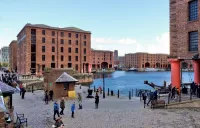
Liverpool is a port city and metropolitan borough located in...
Under Armour is an American sportswear company based in Baltimore...
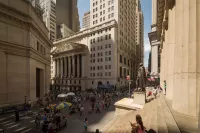
The stock market is where buyers and sellers trade stocks...
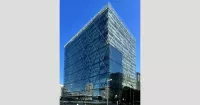
Sony Group Corporation is a Japanese multinational conglomerate based in...
Africa is the second-largest and second-most populous continent comprising of...
Trending
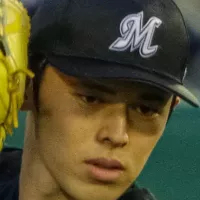
6 months ago Roki Sasaki's Dodgers Debut: Analyzing His First Four Starts and Future Goals.
6 months ago JD Vance Shares Taj Mahal Family Photo, Marriage Faces Speculation and Wife's Mystery
3 months ago TJ Watt becomes highest-paid non-QB after extension; JJ Watt reacts hilariously.
6 months ago Merrill Lynch Focuses on Advisor Growth and a Merrill Advisor Joins 1792.
Miles Heizer is an American actor recognized for his roles in both television and film He gained significant attention for...
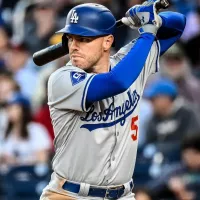
2 months ago Freeman supports Betts amidst slump as Ohtani leads. Dodgers make lineup changes.
Popular

Candace Owens is an American political commentator and author known...
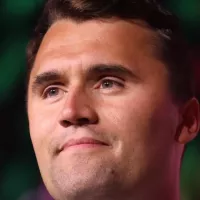
Charlie Kirk is an American right-wing political activist entrepreneur and...
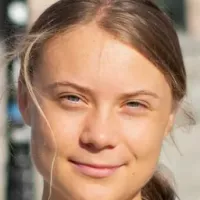
Greta Thunberg is a Swedish climate activist who gained international...
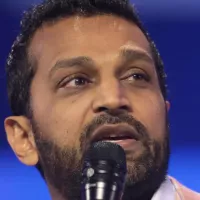
Kashyap Pramod Patel is an American lawyer and former federal...
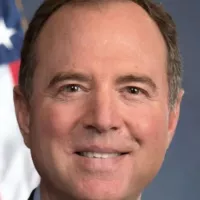
Adam Schiff is an American politician and lawyer currently serving...
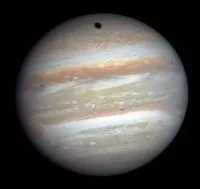
Jupiter is the fifth and largest planet from the Sun...